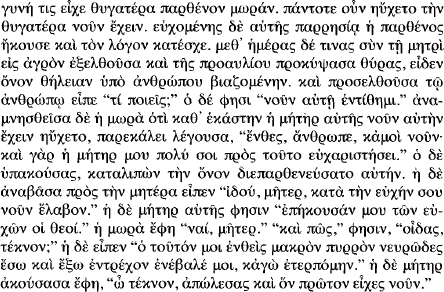Research Article
Jason at Colchis: Technology and Human Progress in Valerius Flaccus
-
- Published online by Cambridge University Press:
- 04 July 2014, pp. 1-13
-
- Article
- Export citation
Reading a View: Poem and Picture in the Greek Anthology
-
- Published online by Cambridge University Press:
- 04 July 2014, pp. 73-103
-
- Article
- Export citation
Dealing with Ghosts: Literary Assertion in Statius' Thebaid
-
- Published online by Cambridge University Press:
- 04 July 2014, pp. 14-23
-
- Article
- Export citation
Festina Lente: Progress and Delay in Ovid's Fasti
-
- Published online by Cambridge University Press:
- 04 July 2014, pp. 104-129
-
- Article
- Export citation
Evolution of An Assassin: The Letters of Chion of Heraclea
-
- Published online by Cambridge University Press:
- 04 July 2014, pp. 24-52
-
- Article
- Export citation
Signatures Events Contexts: Copyright at the End of the First Principate
-
- Published online by Cambridge University Press:
- 04 July 2014, pp. 130-159
-
- Article
- Export citation
Testing Virginity in Achilles Tatius and Heliodorus
-
- Published online by Cambridge University Press:
- 04 July 2014, pp. 160-197
-
- Article
- Export citation
How Classical is Ariadne's Parrot? Southall's Painting and Its Literary Registers
-
- Published online by Cambridge University Press:
- 04 July 2014, pp. 53-72
-
- Article
- Export citation
Front matter
RMU volume 39 issue 1 Cover and Front matter
-
- Published online by Cambridge University Press:
- 04 July 2014, pp. f1-f6
-
- Article
-
- You have access
- Export citation
RMU volume 39 issue 2 Cover and Front matter
-
- Published online by Cambridge University Press:
- 04 July 2014, pp. f1-f6
-
- Article
-
- You have access
- Export citation
Back matter
RMU volume 39 issue 1 Cover and Back matter
-
- Published online by Cambridge University Press:
- 04 July 2014, p. b1
-
- Article
-
- You have access
- Export citation
RMU volume 39 issue 2 Cover and Back matter
-
- Published online by Cambridge University Press:
- 04 July 2014, p. b1
-
- Article
-
- You have access
- Export citation

